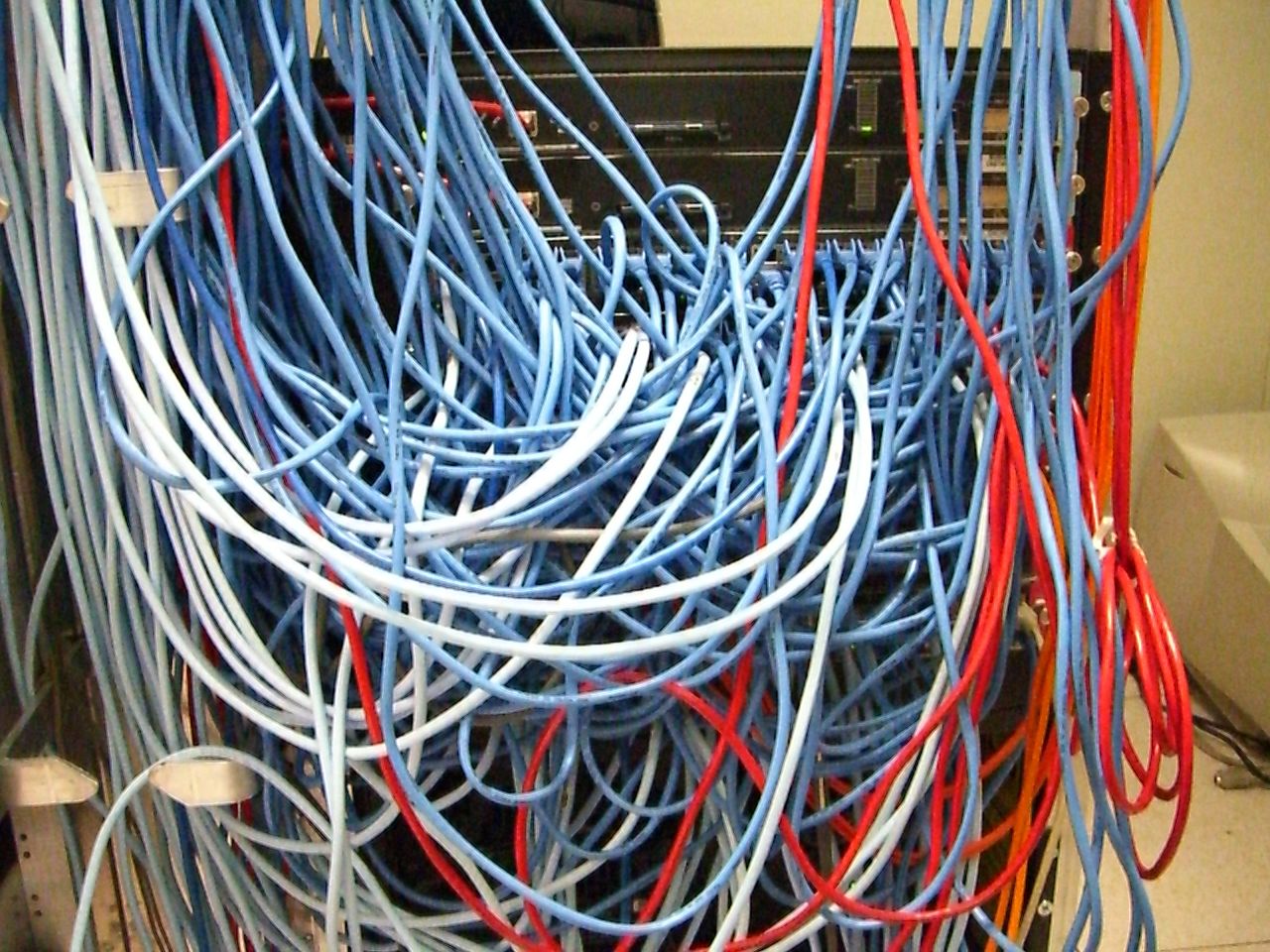Managing data center cables
Data centers can be of critical importance to the smooth-running of a business. In the digital world we now live in, data center failure can stop a business in its tracks. Therefore, it’s surprising that many businesses still have issues due to improper cabling. Some may even regale new employees with tales of the IT guy who once vanished in a sea of tangled wires, never to resurface.
Research by Aston University in England has even confirmed that cables or wires can spontaneously knot or tangle, as has long been contested by some employees. Problems with poor cabling management can include: • Cable damage due to cables being bent or pressed against sharp edges • Crosstalk • Signal interference • Inefficient use of space This doesn’t have to be the norm though. With a little planning and coordination, your tangled cabling nightmare can become the data center of your dreams. Below are some tips for organising your data center cabling to ensure maximum efficiency.
Color is your friend
It may seem juvenile, but one of the easiest ways to organise your data center is to use color coding. Using a single color for each patch cable and cable run is an effective way to visually differentiate between different cables. Assigning colors for each cable run will also make it easier to troubleshoot issues and of course, it comes with the bonus of being aesthetically pleasing too.
Measuring leads to Merriment
Be sure to carefully measure cables before cutting them. Guessing or not measuring correctly only leads to tangled heaps and is a costly waste that can be avoided. The right sized cable can go a long way, so measure, then measure again! Which leads to the next tip…
Less is more
If you have a rack with servers within touching distance, there is no need to have patch cables dangling off them. Only use what is needed and you can avoid tangles and frustration. Save yourself the stress by ensuring patch cables are the perfect length.
Aim for 100%
Always test a cable after creating it and ensure that it is 100% operational. If it isn’t, redo it. If it is still not passing 100% after a few attempts at termination, then discard it. Using a high quality
tester for cables can also reduce extra work later on.
Label every cable, twice
Labelling cables should be a no-brainer. It reduces your workload and will make your life much easier. Each cable should have a label on both ends, as this makes testing circuits a smoother process, especially when resetting cables back to their default locations. It may seem time-consuming but it will be worth it in the long run. Ensure that you are systemic when labelling and it is carried out in a logical and consistent manner. Follow the ANSI/TIA-606-B Cable Labelling Standards when possible.
Design your center with cables in mind
When you are planning your data center, think of how it will impact running cables. This is how you avoid maverick cables that drape from the ceiling or try to trip you from the floor. It’s also a good idea to plan for more than you need. Thinking long-term and running extra conduit and drops can avoid problems if you do need to expand your data centre in the future.
Prevent cables from overheating
That’s right, cables need to be kept cool as well as servers. Imagine the mass of cable that you have, if it was all overheating it could lead to disaster. Prior data center planning can ensure it is designed to keep server racks and networking nice and cool. For example, organising horizontal cable trunks into neat bundles can keep the cables cool as can preventing bundle trunks from blocking airflow pathways. As you can see, the right steps can ensure proper management of data cabling and the benefits can include:
-
Reduced signal interference. Removing interference between cables and crosstalk can boost system performance
-
Ease-of-access and increased maintenance efficiency. Having accessible internal rack components makes maintenance and servicing a less time-consuming task and reduces safety hazards.
-
Scalability. Quality cable management procedures allow you to expand and grow your infrastructure efficiently without running out of space.
Once you have planned effectively and followed these steps, try not to lapse. Adhering to the old adage of “cleanliness is next to godliness” and auditing racks regularly can normalise the idea of neat, labelled cables without exceptions. Now, go and invest in a decent
cable label printer!
